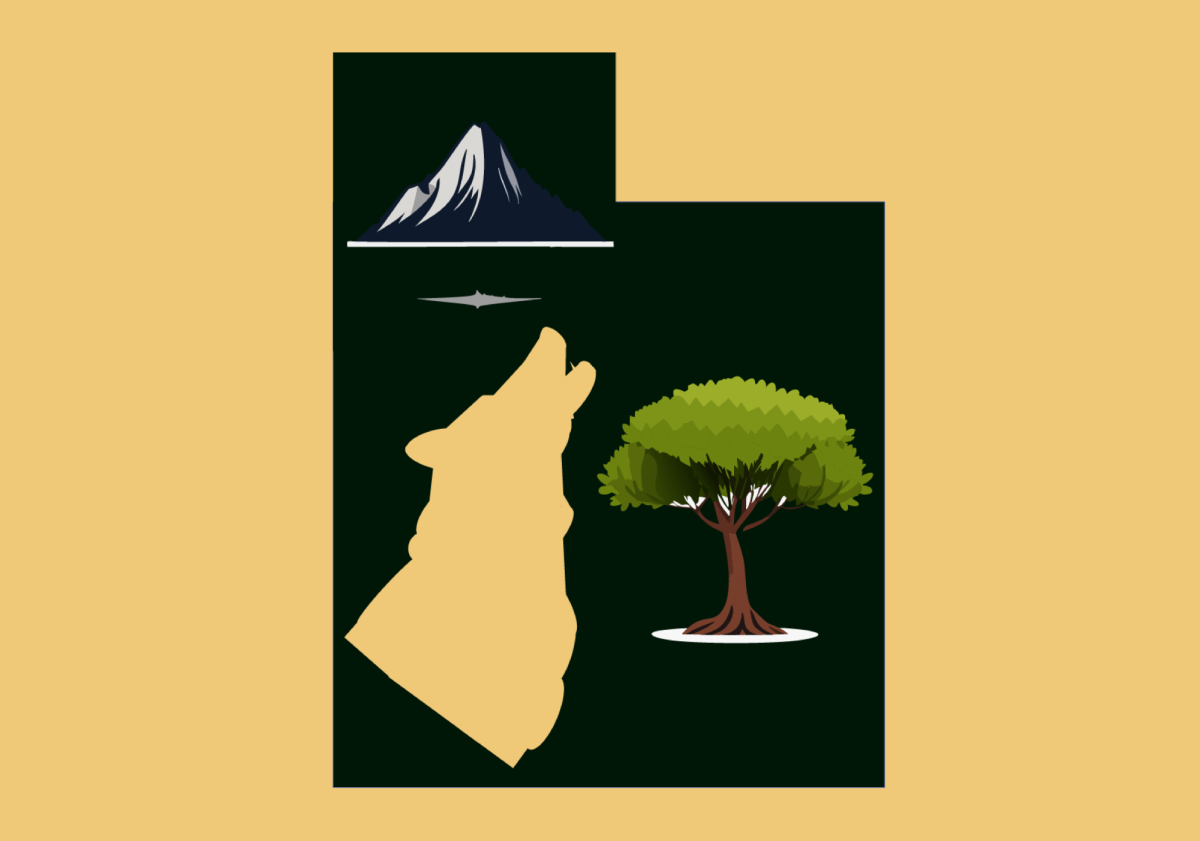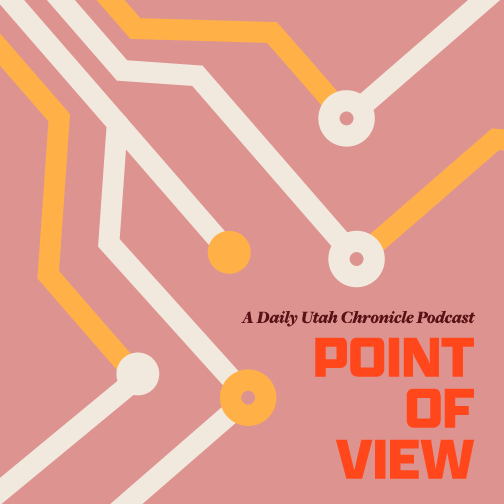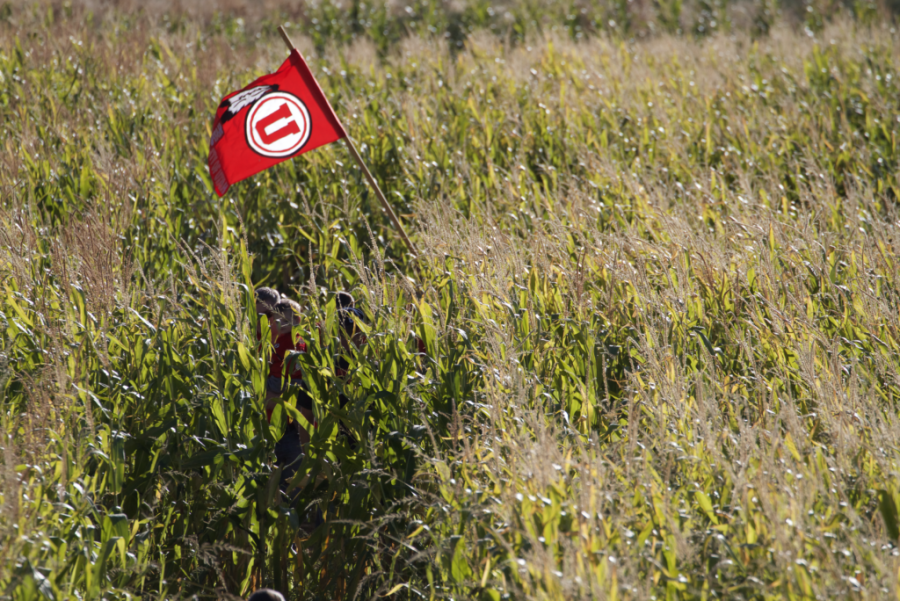Corn is about as American as it gets. Believe it or not, you eat corn almost every day in almost every meal. It’s in everything: soda, chips, bread, ice cream and so much more.
Its incredible pervasiveness is masked by the obscure ingredients which are derived from corn. Corn flour, corn meal, corn syrup, fructose, ethanol, sorbitol, dextrin, maltodextrins, dextrose, corn oil, hydrol, treacle, etc., the list continues. What also makes corn American is that it is a disaster for the environment.
I took a class at the University of Utah called Civic Engagement and Social Change from professor Charlene Orchard. Instead of looking at common topics in current politics, Orchard spoke about something a little less polarizing — food politics.
We learned about food deserts, activism, farming and yes, corn. One of the books we read was Michael Pollan’s “The Omnivore’s Dilemma: A Natural History of Four Meals.” Pollan is a journalist who went on a journey to answer one not-so-simple question: What should we have for dinner?
Before this class, food politics hadn’t crossed my mind. I was a vegetarian because I knew the meat industry was harmful to the environment and cruel to animals, but I hadn’t delved nearly deep enough into what this looked like in the real world.
When we picture farms, we usually think of a sweet little red barn with a rooster perched on top, looking out over rolling patches of bright green crops as the sun smiles down from above.
It’s different in reality. Farming is a large industrial business, run by relatively few people on large patches of land. This happens because of advancing technology and a focus on one specific crop per farm. Farms typically grow monocrops where only one type of food is cultivated. In the case of the United States, most of this is either corn or soybeans.
Many strains of corn grown in the U.S. are genetically modified organisms or GMOs. The genetically modified corn is equipped with certain qualities which make it easier to grow. For example, it can be modified to resist certain pests or to grow closer together, thus producing a higher crop yield.
These benefits come at a cost. Genetically modified corn is harmful for the environment. Often crops are bred to be resistant to heavy pesticides or weed killers. Once the corn is resistant, the chemicals are dumped on the ground. This proves harmful to nearby wildlife and wildlife habitats which have not developed the same resistance.
Another issue that arises with genetically modified corn is the problem it poses to farmers who do not wish to use such corn or who cannot afford the higher-priced varieties.
Corn pollinates in a unique way. The tassels at the top of the stalk open up and release pollen into the air, which floats down to land on the silks of each individual ear of corn.
In an open pollen situation, pollen gets everywhere and can land on the silks of nearby crops. If a farmer is found to have a special strain of corn through this pollination process and the farmer did not buy the corn, this can result in the farmer being heavily fined simply for being in a nearby area.
In addition to dangerous pesticides and weed killers, corn needs an enormous amount of fertilizers to keep crops healthy and to produce the highest yield. Most synthetic fertilizers are made with nitrogen. Farmers tend to err on the side of caution; the more nitrogen they put on their fields, the less likely their corn will be unable to grow. This leads to extra nitrogen, far more than the corn would use itself. The nitrogen can lead to pollution and acid rain. It also seeps into the ground and can make its way to natural water banks and rivers, rendering the water unsafe for drinking.
Corn makes for a great commodity. Varieties of commodity corn are practically inedible, unless they undergo massive amounts of processing. This corn sits in storage unused as a sort of economic buildup.
Corn can be processed to turn it into any number of ingredients. This requires an incredible amount of chemicals and an alarming amount of water. These processes hurt the environment, and they hurt our bodies. Corn isn’t great for us to begin with, but chemically processed corn in every meal takes a huge toll and can contribute to health issues.
Although grass is the natural diet for most farm animals, they are also becoming a part of the corn food chain. The overabundance of corn has led to some alternative ways to get rid of it: one by force-feeding it to animals. Many animals aren’t biologically equipped to properly digest corn.
The corn in the belly of a cow increases its pH and brings it closer to what a human stomach looks like. The increase in pH makes it possible for bacteria to grow. Heavy antibiotics are pumped through cows, and because of the constant presence of these medications, the bacteria builds up a resistance. These same bacteria can reside in our intestinal climates, but as they build a resistance to antibiotics they become increasingly more dangerous.
The biggest challenge of modern corn farming is that the process is practically irreversible. With farms owned by massive corporations, government funding for unhealthy farming practices and a whole food system essentially built upon the way we grow our corn, there’s no escape, but you can do a few things to help.
Become more conscious of your eating habits and find ways to get sustainable food — shop for crops and meat products from local farmers instead. Educate yourself about our food system and become engaged in food politics. Volunteer at a community garden.
If it’s possible to change this downward spiral at all, it will be a long process full of small steps taken by all of us.


















Lawrence • Jan 7, 2018 at 4:31 pm
Just a whole lot of false information in this article. Far too much to begin to address. But I will mention that 96% of N American farms are family owned. Both large and small farmers grow GE crops because they help with sustainability. Thank you for your intreast in Ag . Farmer Lawrence
Larry St Croix • Jan 7, 2018 at 3:41 pm
Nice try but there is so much misinformation it is hard to know where to start. I’ll keep it superficial.
1. Farmers do not put extra fertilizer to be on the safe side, a little research into the price of fertilizer and understanding that overspending on inputs cuts into profit (if there is any) should put that theory to rest. Soil analysis is done and only what is needed is applied.
2. Scientific consensus is that air pollution from burning of fossil fuels is the major cause of acid rain. Think cars, trucks, coal burning power plants
3.We don’t force feed cows corn, that kills them Dead animal is loss not profit. Note that most dairy farmers and beef feedlots employ nutritionists to ensure that their cows are fed a balanced ration and kept in tip-top production shape for the least possible feed expenditure waste.
4. Cattle in the USA are not “constantly medicated with antibiotics.” I know nothing about commercial poultry raising or pork but I do know cows.
5. Dairy farmers can’t sell milk that has antibiotic residue or contaminants, every load is tested by the processor, not the farmer, before leaving the farm. The entire tank is dumped if any is found, that is loss not profit. Milk from a cow on antibiotics or within the withdrawal period is kept separate & dumped, but she still needs to eat and be milked.
6. Beef producers must also observe a withdrawal period after using antibiotics before slaughter There are more problems reported (from the cow’s point of view) with farmers who refuse expensive veterinary treatment. Remember excessive costs cut profit. Antibiotics are not free and the animal must still be fed and housed while on them plus labor costs to administer.
Just as a matter of curiosity, what would you propose we do with all the land and the families who farm it if growing corn were banned?
Delmar Smith • Jan 7, 2018 at 2:52 pm
You should start that education process on yourself you obviously have no idea what you’re talking about when it comes to do GMOs and cattle and farming
mike densy • Jan 7, 2018 at 12:26 pm
I think it is you that needs to educate yourself about food and how it is grown and put the table. Your article is completely wrong and you should be sued by farmers for wrong information. Gmo’ s make us use less pesticides farmers don’t dump them on the ground they just need not spray anymore, also GMO crops is a natural thing nature does on its own for millions of years. Do you thinks framers are stupid and waste money Dumping fertilizer in the ground, they only put on what the plant needs fertilizer is very expensive.
Shame on you for for writing such garbage, you are the reason why many people do not know how food gets to their plate and think farmers are terrible people polluting the earth when it is the complete opposite.
Glenn Needham • Jan 7, 2018 at 11:42 am
Where did you get your information?
I would bet from social media or your local “organic” “farmer”?